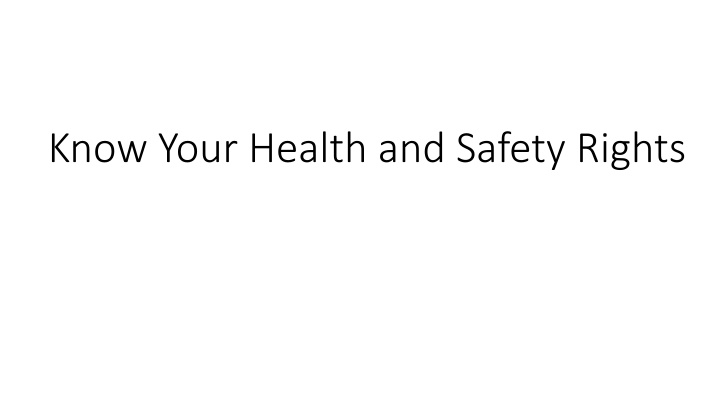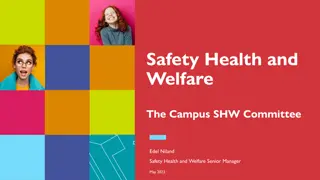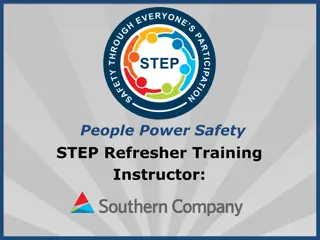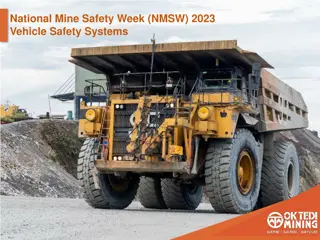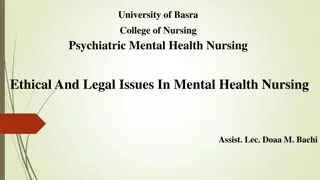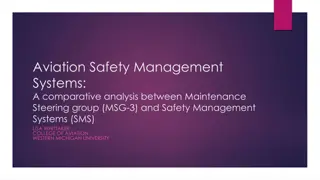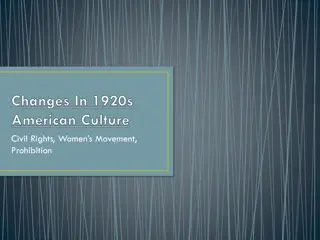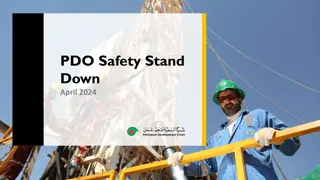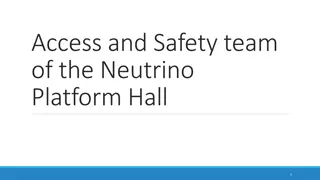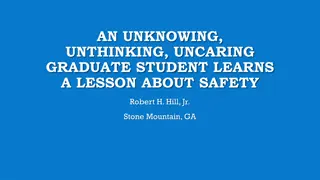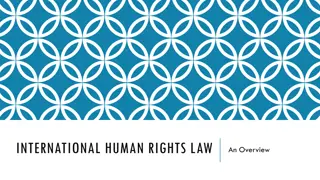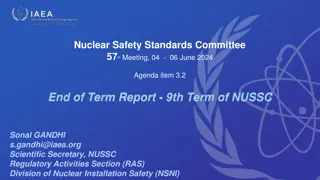Know Your Health and Safety Rights
Employers have a duty to ensure the health and safety of their workforce as per the Health and Safety at Work Act 1974. This includes conducting risk assessments, providing necessary protective equipment, and following the hierarchy of prevention and control. Employers can be held liable if they fail to address known risks adequately.
Download Presentation

Please find below an Image/Link to download the presentation.
The content on the website is provided AS IS for your information and personal use only. It may not be sold, licensed, or shared on other websites without obtaining consent from the author.If you encounter any issues during the download, it is possible that the publisher has removed the file from their server.
You are allowed to download the files provided on this website for personal or commercial use, subject to the condition that they are used lawfully. All files are the property of their respective owners.
The content on the website is provided AS IS for your information and personal use only. It may not be sold, licensed, or shared on other websites without obtaining consent from the author.
E N D
Presentation Transcript
Employers have a general, common law duty to take reasonable care for the health and safety of their workforce
Health and Safety at Work etc Act 1974 protect the health, safety and welfare of their workforce and others affected by their work activities. maintain the place of work (where it is in the employer s control) so that it, and access to and exit from it, is safe and without risks to health so far as is reasonably practicable duties on employees to take reasonable care to ensure they do not endanger themselves or anyone else who may be affected by their work activities. Personal injury claims can now only succeed if they can prove it resulted from their employer s negligence
Risk assessments The hierarchy of risk control : Risks should be reduced to the lowest reasonably practicable level by taking preventative measures, in order of priority, with eliminating the risk at the top of the list and providing personal protective equipment (PPE) as the last resort. It is a breach of health and safety law for an employer to move straight to PPE without considering other ways of eliminating or reducing risk to health and safety.
Regulation 4 of the Management Regulations - hierarchy of prevention and control: avoid risks altogether evaluate any risks that cannot be avoided combat risks at source adapt the work to the individual adapt to technical progress replace dangerous work with safe or safer alternatives prioritise collective over individual protective measures; and give workers appropriate instructions.
COVID-19 risk assessments must take account of the additional risks to anyone who is pregnant or a new mother.
Liability and duty of care If employers know of a health and safety risk or should have known, based on the current state of knowledge at the time of the incident they will be liable if an employee is injured, killed or suffers illness as a result of the risk and they failed to take reasonable care.
A 2018 Sentencing Council guideline recommends prison sentences of up to 18 years for employers found guilty of gross negligence manslaughter whose long- standing and serious disregard for the safety of employees, motivated by cost-cutting, has led to someone being killed .
Section 44 of the Employment Rights Act 1996 provides workers with the right to withdraw from and refuse to return to a workplace that is unsafe.
Right to refuse work if, after raising concerns, there is still a serious or imminent danger, the employee and co-workers may have the right to leave work, depending on specific circumstances Section 44 of the Employment Rights Act 1996 (ERA 96) Also reasonable adjustments for disabled workers
Sections 44 and 100 of the Employment Rights Act 1996 (ERA 96) deal specifically with health and safety cases. ERA 96 says an employee should not suffer a detriment or be dismissed or made redundant for various reasons including: leaving or refusing to return to a place of work in circumstances of serious and imminent danger, or taking steps to protect themselves or others in these circumstances
The Health Protection (Coronavirus, Restrictions) (England) Regulations 2020, which brought the lockdown into force on 26 March 2020, were made in response to the serious and imminent threat to public health which is posed by the incidence and spread of severe acute respiratory syndrome coronavirus 2 (SARS-CoV-2) in England .
As long as the employee forms a genuine view of a risk that they reasonably regard as serious and imminent, the fact that the employer disagrees with the seriousness of the risk or the appropriateness of the steps taken is irrelevant. Mr Oudahar, who worked as a cleaner, refused to mop a kitchen floor because of exposed electrical wiring. His dismissal for refusing to mop the floors because of the danger was automatically unfair. The fact that the employer s maintenance manager disagreed with his assessment of the risk was irrelevant to the automatic unfairness of his dismissal. Oudahar v Esporta Group Limited [2011] UKEAT/0566/10
even if this view later turns out to have been mistaken Mr Joao was dismissed from his job as a night porter. He argued that his dismissal was automatically unfair because he was dismissed for complaining to his employer that it was a breach of health and safety legislation to require him to work nine consecutive nights. In fact, he was mistaken in his belief that working nine consecutive nights is unlawful. Joao v Jurys Hotel Management UK Limited UKEAT0210/11
On PPE Government guidance on face coverings is as follows (updated: 31/07/2020) "Face coverings are not a replacement for the other ways of managing risk, including minimising time spent in contact, using fixed teams and partnering for close-up work, and increasing hand and surface washing. These other measures remain the best ways of managing risk in the workplace and government would therefore not expect to see employers relying on face coverings as risk management for the purpose of their health and safety assessments."
Advice from the TUC makes the additional points on PPE: the most effective mask for those dealing directly with COVID-19 patients is the asbestos respirator level 3 (FFP3). Tests have shown it reduces the level of exposure by six-fold. check masks are not out of date and look out for a certification mark, as this indicates it has met relevant EU health and safety standards gloves do not prevent infection. It is illegal for an employer to charge for any safety equipment.
UCU advice UCU branches should consider how far government guidance for outbreak management plans complies with the employer's duties under the Health and Safety at Work Act 1974 and the Regulations that sit under this. There are likely to be contradictions in the government guidance but UCU are clear that the duty to implement preventative measures under Health and Safety legislation must take priority and consider the latest data and research.
Key concerns: Risk assessments have been drafted with little input from H&S reps and are very late notice Birmingham has special provisions in place due to high rates of infection and rapidly rising Little consideration for practicalities of social distancing especially doorways and the incorrectly calculated spacing in teaching rooms Already clear that students are not abiding by social distance measures Already have several covid cases on campus Refusal to inform UCU until a cluster of 10 Track and trace system is sketchy Face masks are not asbestos respirator level 3 (FFP3) No exemptions are being made for health conditions or BAME staff Incorrect advice on visors But the bottom line is that there is no obvious reason to risk on-campus teaching in the first place given that teaching/working as a default is clearly reasonably practicable and therefore does much more to reduce unnecessary risk.
Clusters, outbreaks, and so on 'On a sliding scale, there are a range of outbreak scenarios that require appropriate actions: cases refer to individual cases of Covid-19 clusters refer to 2 or more cases associated with a specific setting in the absence of evidence of a common exposure or link to another case outbreaks refer to 2 or more confirmed cases associated with a specific setting with evidence of a common exposure or link to another case community spread refers to sporadic or linked cases on a limited or extensive basis (DHSC)
UCU advice we expect UCU H&S reps to be given sufficient detail on infections within workplaces to undertake investigations, inspections and to engage in meaningful consultation on all health and safety measures needed within the workplace to prevent exposure to Covid-19.
Key advice Put concerns in writing Request the asbestos respirator level 3 (FFP3) Request alternative working arrangements note disabilities, health conditions, the hierarchy of risks and that online teaching/working has a massive impact in terms of reducing risk with little impact on the job duty, and therefore is clearly reasonably practicable . See UCU template letters. Include reference to all of BUCU s concerns to be circulated shortly Note the right to refuse to work under ERA section 44: in circumstances of danger which the employee reasonably believed to be serious and imminent
